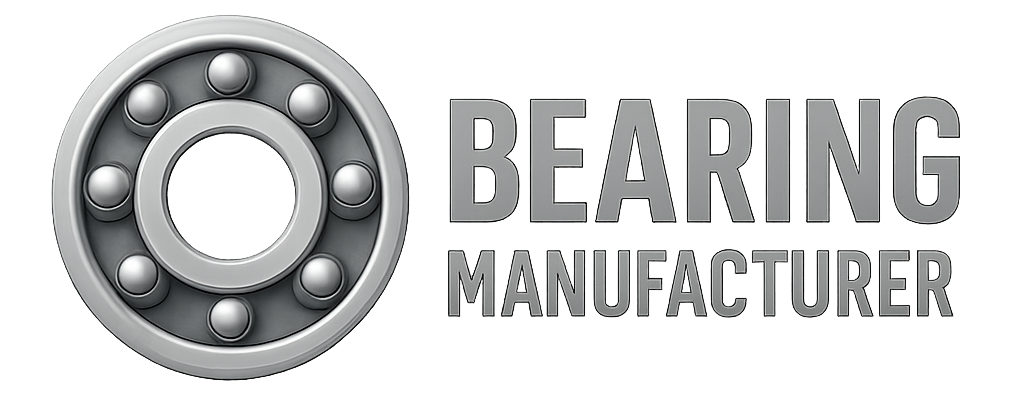What Are Bearing Retainers?
Bearing retainers, also called cages, are components that keep the balls or rollers inside a bearing evenly spaced and correctly aligned. This prevents direct contact between rolling elements, reduces friction, and ensures smooth, efficient operation. In some designs, the bearing retainer also acts as a lubrication reservoir or provides a solid lubrication film through its material or coating.
Types of Bearing Retainers
By Bearing Type
-
Ball bearing retainers – Designed for high-speed, low-friction applications, focusing on reduced noise and vibration.
-
Roller bearing retainers – Used in cylindrical, tapered, and spherical roller bearings, offering high load capacity and precision.
By Material
Metal bearing retainers – Known for durability and strength, suitable for high-load, high-temperature environments, though they may require corrosion protection.
-
Carbon steel – Common for chrome steel bearings.
-
Stainless steel (AISI 304 / AISI 420) – Corrosion-resistant, preferred for higher-temperature use.
-
Brass – Handles up to 250 °C (480 °F), suitable for medium-to-high speeds.
-
Bronze – Thin cross-section, high-speed and strength capability.
-
Crown type – Inner ring guided, suitable for low-to-medium speeds.
-
Ribbon type – Ball guided, typically for moderate speeds.
-
Plastic bearing retainers – Lightweight, corrosion-resistant, suitable for high-speed use, but with limited high-temperature capability.
-
Nylon Crown (PA) – For acetal plastic bearings, corrosion-resistant, inner ring guided, temperature range -30 °C to +100 °C; unsuitable for very high speeds.
-
Reinforced Nylon Crown (TW) – Better sliding than a steel bearing retainer, stable running torque, high-speed, low-noise, ball guided, -30 °C to +120 °C.
-
Polyethylene Crown (PE) – For low-speed applications in 316 stainless steel bearings, corrosion-resistant, -40 °C to +80 °C, inner ring guided.
-
PEEK Crown (PK) – Highly corrosion-resistant, used in ceramic bearings, 316 stainless steel bearings, PEEK bearings, hybrid bearings, and super-precision ball and cylindrical roller bearings; suitable for vacuum environments; temperature range -70 °C to +250 °C, inner ring guided.
-
PTFE Crown (PT) – For ceramic bearings, 316 stainless steel bearings, and PTFE bearings; temperature range -190 °C to +200 °C; highly corrosion-resistant; inner ring guided.
Phenolic resin bearing retainers – Made from linen or paper-based phenolic materials, capable of absorbing oil lubricants to provide additional lubrication, strong wear resistance, and suitable for high-temperature applications.
By Shape
-
Crowned retainers – Reduce friction and wear between balls and the retainer, commonly used in ball bearings.
-
Ribbon retainers – Lightweight, low-profile, used in small bearings.
-
Cage retainers – Have pockets to hold balls or rollers, made from metal or plastic.
Benefits of Bearing Retainers
-
Reduced friction – Minimizes contact between rolling elements and raceways.
-
Extended bearing life – Distributes loads evenly, reducing wear.
-
Improved reliability – Prevents element collision and premature failure.
-
Higher load capacity – Maintains optimal element spacing for heavy loads.
-
Noise and vibration reduction – Important for sensitive machinery.
-
Ease of maintenance – Retainers can be replaced without replacing the entire bearing.
Factors to Consider When Choosing a Bearing Retainer
-
Material and type – Match to load, temperature, and corrosion resistance needs.
-
Load and speed – High loads and speeds require stronger, heat-resistant designs.
-
Operating environment – Consider exposure to high temperatures, moisture, chemicals, or vacuum conditions.
Common Issues with Bearing Retainers
-
Wear and tear
-
Contamination
-
Misalignment
-
Overloading
-
Improper installation
-
Fatigue failure
Prevention tips:
Regular inspections, correct installation, proper load management, and timely replacement of worn parts help extend service life and avoid unexpected failures.
Bearing Retainers vs. Ball Separators
Both maintain spacing between rolling elements, but bearing retainers can be used in both ball bearings and roller bearings, while ball separators are specifically for ball bearings—especially in high-speed applications. Retainers offer broader versatility, whereas separators are optimized for certain speed and friction requirements.
Conclusion
Bearing retainers are critical for reducing friction, extending service life, and improving the reliability of bearings. Selecting the correct design and material ensures optimal performance and minimizes downtime. A well-chosen bearing retainer can significantly influence the success of your machinery.
